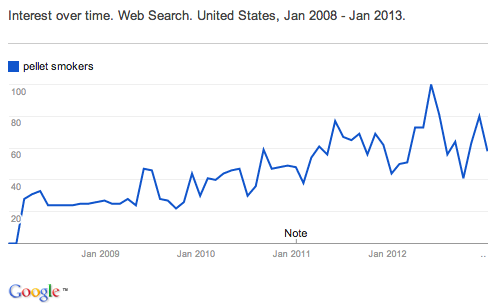 As you know, we rarely run guest posts but today I’d like to welcome best selling author Jay Baer to TopRank’s Online Marketing Blog. Jay’s new book, Youtility, is lighting the bookseller charts on fire and has offered an excerpt for your reading pleasure.
As you know, we rarely run guest posts but today I’d like to welcome best selling author Jay Baer to TopRank’s Online Marketing Blog. Jay’s new book, Youtility, is lighting the bookseller charts on fire and has offered an excerpt for your reading pleasure.
After meeting Jay about 5 years ago at SXSWi, it’s been a pleasure to see his rise as a digital marketing powerhouse keynote speaker, consultant and all around great guy. Jay is a veteran agency owner going back to the very early days of the internet and an entrepreneur. He’s worked with numerous Fortune 500 brands and is one of the few marketing “celebrities” that walks the talks he’s giving. Enjoy!
 For your marketing to be so useful that people would gladly pay for it – which I call “Youtility” marketing – you have to fully understand what your prospective customers need to make better decisions, and how you can improve their lives by providing it. There was a time when trying to reach “25 to 44 year-old housewives in the Midwestern United States” qualified as a highly segmented effort. Today, in the age of self-serve information, the demographics of prospective customers are simply the starting point, not the end.
For your marketing to be so useful that people would gladly pay for it – which I call “Youtility” marketing – you have to fully understand what your prospective customers need to make better decisions, and how you can improve their lives by providing it. There was a time when trying to reach “25 to 44 year-old housewives in the Midwestern United States” qualified as a highly segmented effort. Today, in the age of self-serve information, the demographics of prospective customers are simply the starting point, not the end.
You must align what you provide your customers and prospects with what they actually need.
Lee Odden, CEO of TopRank, and author of the excellent book Optimize describes this need to better understand the customer exceptionally well:
“You have to empathize with your target audience in three ways,” says Odden. “One, ‘how is it that they discover information?’ Two, ‘What are their preferences for consumption?’ which drills down into channels, and devices and content types. Then the third thing is what motivates them to take action?”
Fortunately, as knowing more about your customers has increased in importance, so have the tools available to gain that understanding. There are a variety of free (or nearly so) approaches that you can use to better understand customer needs on the way to creating Youtility.
Search Engine Data is the Atlas for Consumer Understanding
While the number of places consumers go to seek information has grown exponentially, weakening somewhat the role of search engines in the process, search engines (especially Google) stand alone in giving us the ability to mine and analyze consumer inquiry data.

A variety of free tools from Google can help you understand customer needs, based on what people are looking for, and when. Google Trends enables you to compare search volume patterns across location and time frame, and provides related search terms and comparative volume for them.
For example, if you owned a barbeque supply e-commerce site and were thinking about starting a new, online forum dedicated to a method of outdoor cooking growing in popularity, an analysis of “pellet smokers” on Google Trends shows a sharp spike in searches for that term in the United States from 2008 onward. Digging deeper, Google Trends shows that Texas and California have disproportionate high incidences of search volume for “pellet smokers,” and that “pellet grills smokers” and “traeger smokers” (a popular brand) are related queries used by searchers.
An even simpler tool is to use Google Suggest to better understand how consumers see your products and services. Type a company or product name into Google and see what Google “suggests” as possible searches. Typing in “Charmin” for example, finds these suggestions: “charmin coupons,” “charmin mega roll,” and “charmin toilet paper” as well as something called “charming charlie.”
This information is updated instantly and is useful for understanding who consumers think your competitors are, and how you stack up.
A longstanding favorite of the inbound marketing community, Google’s Keyword Tool is often used to determine which search terms to include in a paid, search engine advertising campaign. Unfortunately, this tool will soon go offline, so it’s time to start looking at alternatives. They all pretty much work like this: starting with one, a handful or hundreds of seed terms, the keyword tool will then recommend a swath of alternatives and display comparative search volume and level of competition (number of existing advertisers per term). Using the Keyword Tool with a seed term of “Facebook advertising,” for example, finds that Google recommends “facebook advertising cost,” “free facebook advertising,” “facebook advertisement,” “facebook advertising statistics,” and “facebook and advertising” as the top five alternatives based on relevance, and “facebook advertising costs” is shown with 8,100 monthly searches on average by consumers, with a high level of competition.
Google Correlate is the newest of the free Google tools, and it is essentially Google Trends in reverse. The tool allows you to research a term and see what other searches were being performed with similar volume at a similar point in time, or in the same regions. It’s outstanding when used to uncover seasonal and location-specific inquiry patterns. For example, Google Correlate shows that the search term “pellet smokers” has a .8947 correlation with the search term “big 12 basketball standings” across the entire country, but the correlation in Kansas (where two of the Big 12 members’ universities are located) has a correlation of 4.814. If you – in your barbeque equipment business – want to find a way to provide exceptionally useful marketing for customers in Kansas (and throughout the Big 12 region), a program that sends text messages with instant basketball score updates might make for a successful implementation.
Excerpted from the New York Times best seller Youtility: Why Smart Marketing is About Help not Hype by Jay Baer. See YoutilityBook.com for other resources.
For your further reading pleasure, take a look at an exceprt from Youtility below:
Photo Credit: Shutterstock


